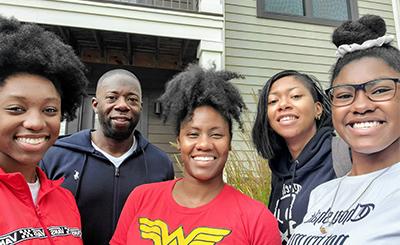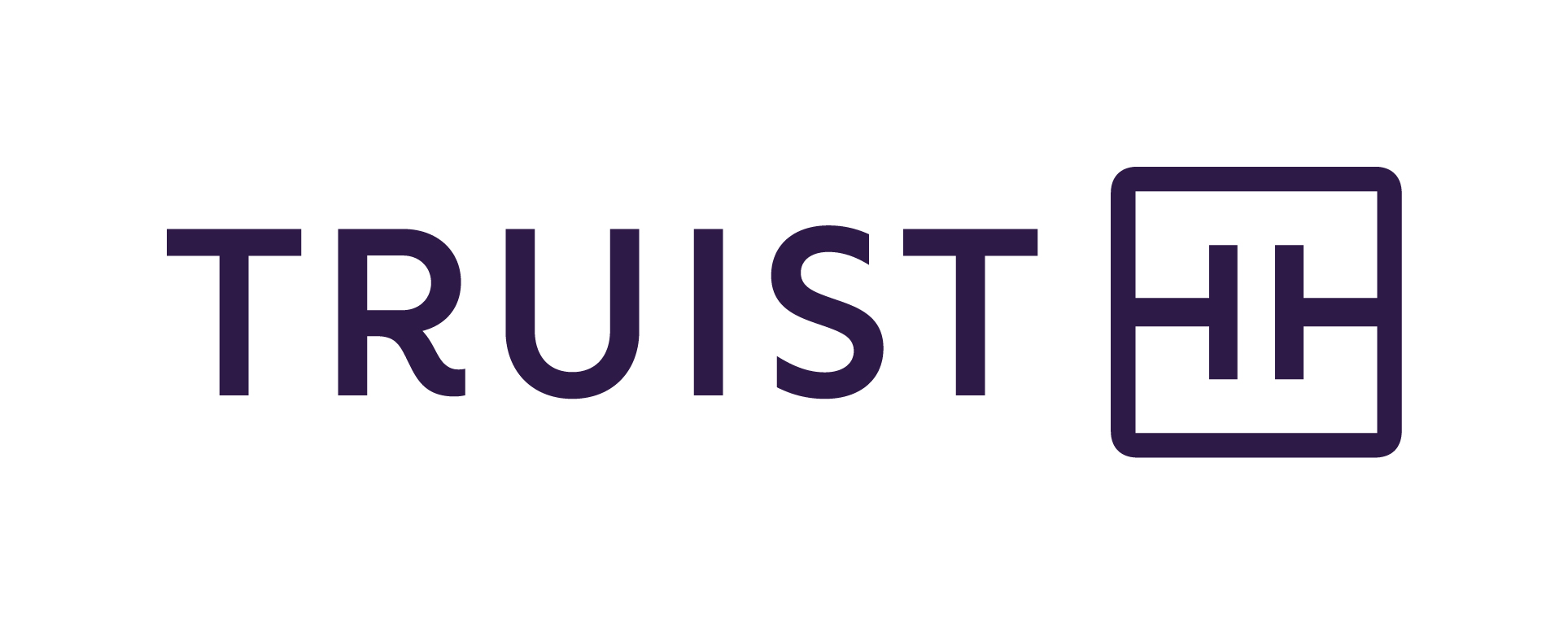The Rewards of Risk
DaySha Gibson has always had an eye for better.
Before she came to Truist, her career started to take shape when she worked in an office and noticed a clear physical divide in the middle of the room. Looking across the office, “it was the other side of the tracks,” she says. One side was better.
“The carpet changed. The lighting was better. The workspaces were better. Everything on that side of the office just looked better than where I was sitting,” Gibson recalls.
I want to be over there, she thought. I don’t know what they’re doing over there, but I want to do it. I want better.
Gibson’s curiosity about what her colleagues on the other side of the office were doing led to her first compliance role, identifying and limiting the risks of the company’s operations. The fundamentals of the job—its focus on structure, logic, and discovery—are part of Gibson’s personality; they’re skills she brings to anything she does.
“This is in my DNA,” she says. As Gibson continued working in risk, it became clear that her purpose was building, creating, and making things better.
The vision to build
Her ability to see what makes things better has led Gibson to her current role as senior vice president of risk for Truist. With her big-picture viewpoint, the metro Atlanta resident excels at risk management and compliance. “Risk management is the ability to help things before they get broken,” she says.
“If a risk team is engaged at the right time, we prevent a lot of horrible surprises from happening,” she says. Gibson’s job is to steer Truist around the possible worst-case scenarios: “You could end up investing time and money to put an initiative in place,” she says, “and then have to spend even more time and money to retool it because you find out it doesn’t meet the desired objective.”
Fixing things before they’re broken is not an easy task. It takes a bit of a real-life superhero—someone who can see into the future, identify ways to bring all the necessary parts together to prevent disaster in the present a build a better future.
“We’re a company with tens of thousands of people,” says Gibson. “We deal with 14 business units and 11 different risk programs, so it’s hard to build something that works for everyone. In my position, I can add value by building connections between the teams. I’m building something that’ll exist beyond me.”
So, how does she manage all her responsibilities and stay composed? For one thing, she’s learned to delegate. “My biggest struggle was giving projects to someone else, losing control over it,” she says. “I had to tell myself, ‘You’re not just robbing yourself of sleep, you’re also robbing people of opportunities to grow.’”
Staying positive while remaining critical
Combining her logical brain and her quest to celebrate the positive is a challenging balancing act. “I’m in the field of risk, so I’m a critical thinker all the time,” Gibson says. Doing risk assessment, she looks at what’s not working in plans and programs. But knowing when to wear her compliance and risk hat has been an evolving skill in her life.
“I point out the gaps, the flaws. This is great at work, but I’ve been told it can be aggravating to watch a movie with me,” she laughs.
Gibson’s family pokes fun of watching TV with her. “Mom, you’re ruining the movie,” her kids used to say. She took this quirk in her personality lightly until she read the book “The Happiness Advantage” by Shawn Achor, who asserts being happy leads to success and not the other way around. It’s a book Gibson lists among her favorites.
As part of embracing the happiness advantage, Gibson focuses not just on what’s not working, but celebrates what’s working, too.
“So I always say, you know what? That one thing may be broken. But the good thing is that one out of 47 things that could be broken, that's 46 things that are working right.” That big perspective complements her dedication to better.
“If a call goes really well, I’ll say it out loud. When I do that, I’ve noticed the energy changes.” Gibson says her teammates respond positively when she brings the happiness advantage. They leave excited about the call they just had, and ready for their whole day to have that same positive energy.
Being grateful for better
Celebrating those small victories helps Gibson keep things in perspective. Raised in the church, one of her favorite gospel songs is “Hold My Mule” by Shirley Caesar. It’s about a man who shouts and dances in church amid the pews. Parts of the congregation objects to his extravagant praise, and they drive to the man’s farm to ask him if he might tone it down.
“If you’re not going to let me sing and dance in church,” the man says, “then hold my mule because I’m going to give praise right here!”
That idea of praise and exuberance is deep in Gibson’s heart. And just like the song, she knows deep belief—and acting on it—can transform those around you. It’s one way she feels like she’s making a difference at Truist.
“I see that we really want to build better lives here,” she says. “It’s equally important for you to be good at your job here as it is to be a good person.” In other words, she’s not just talking about purpose—she’s living it.
Gibson has volunteered with Junior Achievement as part of her commitment to the Truist purpose and found altruism is a mood enhancer. “Even just reflecting on it now, I feel happy all over again,” she says. That happiness effect permeates her life with her family and her work.
“When I want to do good in the world and the community, my company is here to back me up,” she says.
“It’s a positive reminder of how we have so many things to be grateful for,” she says. “And I think the best way to show that gratitude is to help others. It could just be a positive, nice word to somebody during the day,” she says. “It makes a difference.”
Learn more about how Truist’s purpose is the Why behind our work.



